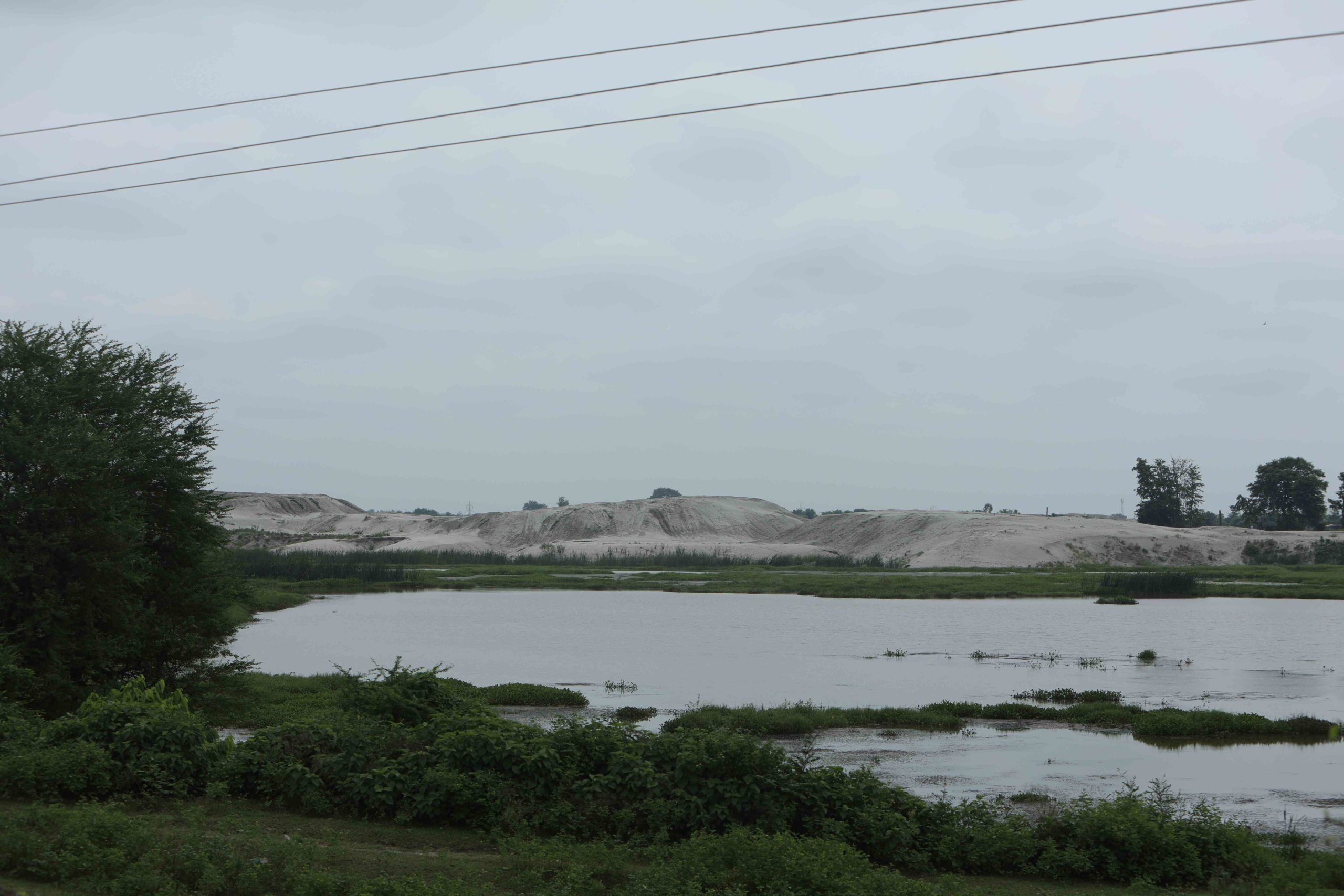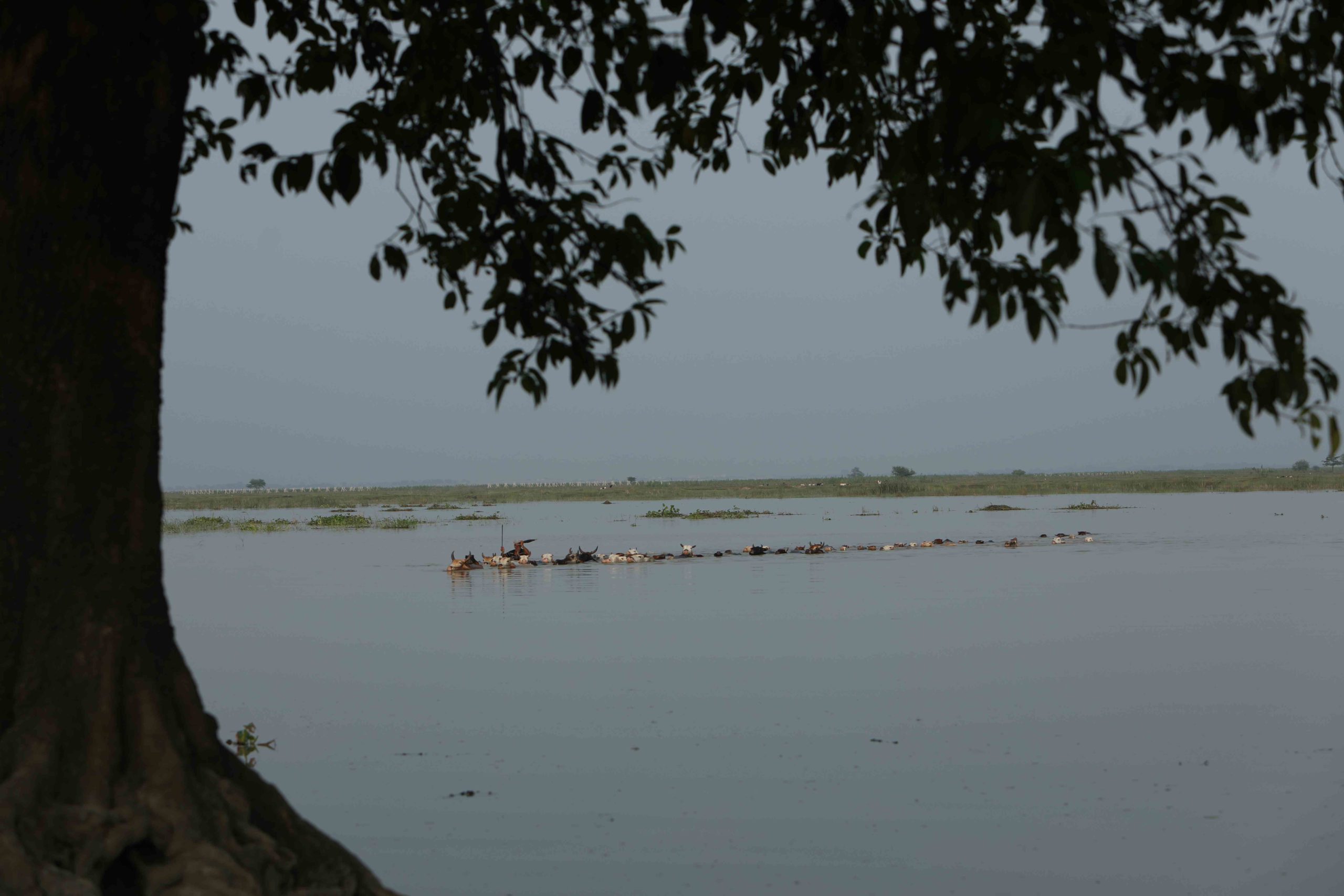From Scroll.in (Oct 29, 2020)
Traditional ‘low tech’ wisdom is actually ‘high science’ perfected over the millennia by local communities.

When the Kosi river floods in Bihar each year, Indian politicians and policy makers always have the same prescription: a high dam upstream in Nepal.
But as the two previous parts of this series have explained, the Saptakosi High Dam will not be effective against the massive inundation that the plains frequently experience. The project could cost up to (Indian) Rs 50,000 crores and the quick rate of sedimentation would give it a life of only three decades to five decades.
All solutions dictated by big government, big business and big infrastructure must be questioned as it relates to the Kosi inland delta and its three million people. One such mind-boggling boondoggle is plan of river-linking so favoured by the Bharatiya Janata Party leadership. The scheme would cost an amount outside the imagination, and create socio-political conflicts between upstream-downstream regions, provinces and countries. Mostly importantly, this plan to transfer water from surplus to deficit areas would change the ecology of the subcontinent.
The Indian authorities – without consulting the Nepali counterparts – imperiously propose the Saptakosi High Dam and canals across the length of the Nepal Tarai as key elements to the river-linking scheme. As a dangerous plan cooked up by untidy minds that will bring untold misery to South Asia a whole, the very idea of river-linking must be abandoned, like the Saptakosi High Dam concept.
River navigation is touted as the ancillary benefit of the Saptakosi High Dam, but experts say adequate flow augmentation can be had through much smaller dams and reservoirs in different parts. Besides, how are you going to convince the downstream population that the high dam reservoir is meant for flood control, when it will actually be kept topped up for the sake of navigation, power generation, irrigation and urban use?
Whether all of this doubletalk is the result of lackadaisical rulers, a technocracy lacking in rigour, or naked subterfuge, it must be challenged. The dangers inherent in playing with natural systems have been obvious in so many parts of the world, as we rush pell-mell into the Anthropocene era. Consider the climate disaster, the drying up of the Aral Sea, the Indo-Gangetic smog that helps shrink the Himalayan glaciers, the micro-plastics in the bellies of tiny fish, the loss of species all over Earth – the monocular vision of the dam-builders and river-linkers takes us in that same direction.
It would behoove the scientists of South Asia to focus their energies on preserving river ecology as a means to protect the communities on the ground, rather than be wowed by expensive, diversionary “river engineering” that has already lost its lustre.
Nature and humanity
The alternative to the Saptakosi High Dam is one that can only come from consulting the people of the Bihar floodplain, who have been neglected by the Patna and New Delhi politicians and technocrats since the 1950s. Just as the structure of the Kosi Barrage helped divert minds from the danger represented of the embankments, so the striking imagery of the future high dam has kept the rest of us from understanding the hazard of the reservoir it will back up.
Speaking of alternatives, the activists of the Barh Mukti Andolan believe, and people-centric scientists propose, that the Kosi embankments must be decommissioned, allowing the communities of Northeast Bihar to revert to values of earlier times when the river was not regarded as the enemy. The phrase “living with the flood” is regarded by many as a cliché, but making lifestyle changes during times of inundation, letting the silt to spread across the farmland and allowing quick flushing of floodwaters may be “low tech”, but it is a “high science” perfected over millennia of habitation.

The politicians and their supporters in the bureaucracy will pronounce the idea of decommissioning embankments as something impossible. But there is no place to go but to methodically deconstruct the embankments, in a campaign that should start on the Kosi inland delta but extend beyond Bihar to the rest of South Asia – all over India, and in Bangladesh, Nepal and Pakistan. Embankments are populist anti-nature, anti-people interventions that must be shown for what they are and do.
Lazy minds and prejudiced observers will nevertheless declare this a tall order, claiming that by now the embankments are almost a part of the natural landscape and people have got used to the bad as well as the good they bring. But these are people who do not empathise with the floodplain communities, who do not believe in transformative politics, and who want us to fatalistically make peace with the politician-contractor nexus and what they foist upon nature and humanity.
When some of us journalists from Kathmandu made that visit to Patna a quarter century ago, a senior technocrat working on the Son river showed satellite imagery of the abandoned channels of the Kosi in its shift westward over two centuries. He was convinced that the answer to the Kosi embankments, which had already outlived their lifespan, should be a dedicated engineering exercise to divert Kosi waters into these “paleo-channels” eastward.
Breaking the big dam fixation
Reading the engineering literature on the Kosi of the past quarter century, a fatalistic ennui has overtaken academia when it comes to suggesting alternatives to the here-and-now problem of the embankments. But it does seem that the substitute to both the existing embankments and the proposed high dam is to decommission the former in a step-by-step process and abandon plans for the latter while erecting engineering structures to divert waters into older channels and allowing the Kosi’s annual gift of silt to spread across the plain.
At one go, this would save Northeast Bihar from the shattering breach of Kosi’s embankment, ensure soil fertility into the future, and rid us all of the high dam fixation. The idea seems to have ecological and agricultural soundness as well as cultural resonance, and at the very least it must be studied in depth before passing judgement on viability. The tendency presently is ab initio rejection.
People will point to the economic cost and socio-political complexity of the exercise of diverting the Kosi’s flow to the older channels. But the real reason the hydrocracy does not want to discuss this is the single-point narrative it has concocted on behalf of the Saptakosi High Dam, which it considers a low-hanging fruit. If you calculate the year-after-year cost of maintaining the Kosi embankments, and the expense of building the Saptakosi High Dam over a quarter century, the expenditure and timeline of the proposed intervention would surely pale in comparison.
Besides, why not give due credit to the floodplain activists by asking them why they are so definitively against the embankments and the high dam?

The lack of accountability in Indian politics that led to the Kosi Barrage and embankments will result in making the same mistake on the Saptakosi High Dam. And it was the same reluctance to learn from the mistake of the Kosi Barrage that had India building, downstream on the Ganga, the Farakka Barrage, commissioned in 1975.
While the Farakka Barrage has not succeeded in its ostensive job of diverted water to “flush” the distributary of Hooghly, it has impacted the ecology of West Bengal, pauperised the downstream region of Bangladesh, and is stuck with the same sediment buildup as with the Kosi levees. With such technocratic incompetency there for all to see, the hydrocracy should have felt a measure of humility, but it has not.
Dinesh Kumar Mishra, engineer and lifelong activist associated with the Barh Mukt Andolan, maintains that the Kosi embankments have hurt more than 10 million people of Bihar, including the million trapped between the embankments and the rest in the water-logged areas outside. Author of the book Trapped between the Devil and Deep Waters (2009), Mishra says the push for the high dam “is an invitation to even greater disaster”.
Sustainable solutions
The South Asia Network on Dams, Rivers and People or SANDRP group has this to say: “Northeast Bihar needs sustainable solutions and not technocratic interventions… What is claimed to be solutions today are certain to be problem tomorrow, as is clear from the experience of Kosi embankment. Kosi and its people will not allow more of such faulty prescriptions. Kosi belongs to the ecosystem and all of society. The river must be allowed to perform its role in maintaining a natural evolutionary balance and continuing with its land-building work.”
Added Kathmandu-based engineer and water scientist Ajaya Dixit: “We must go abandon the concept of flood control and revert to the age-old ways of flood resilience developed by the communities of the plains.” In a philosophical vein, he noted: “Oceans, evaporation, rains, mountains, rivers and oceans – this colossal circulating system is the lifeline of South Asia. Narrow commercial interests and complicit states have fragmented this system and destroyed livelihoods and economies, wounded our civilisation. The new water journey requires respecting our rivers and ensuring the continuity and integrity of the hydrological cycle.”
Looking at the surrounding landscape, standing here on the East Embankment above the Kosi Barrage at the 2008 breach point of Kusaha, the answer seems clear. We must work together with the floodplain people to get the Patna, New Delhi and Kathmandu to abandon plans for the Saptakosi High Dam. We must urge the Indian authorities to urgently commission studies on the deconstruction of the Kosi embankments and diversion of the Kosi waters into the channels of the inland delta, in a manner that the silt will spread, the floods will be of lower height and shorter duration.
The Kosi was never a “river of sorrow”, but the embankments we have built hold the potential for great calamity. Let it not happen. Let us listen to the very communities which have been wounded.
Kanak Mani Dixit is a writer and journalist, and founding editor of the magazine Himal Southasian.
This is the last article of a three-part series on the Kosi river disequilibrium. Read the series here.